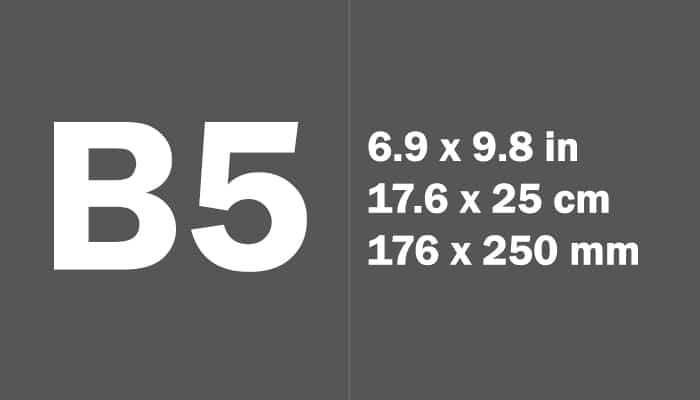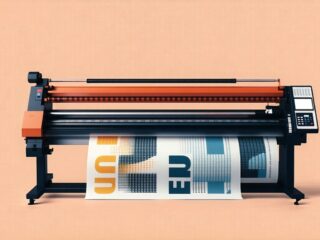Last Updated on April 12, 2024 by Carlos Alonso
Introduction
Paper sizes can be a confusing topic, especially for those who are not familiar with the different standards used around the world. If you’re looking to create professional printed materials, it’s important to understand the various paper sizes available, and how they can be used to create high-quality materials. In this article, we’ll be exploring JIS B5 paper size, including its dimensions, uses, and benefits.
What is JIS B5 Paper Size?
JIS B5 paper size is a standard paper size used in Japan and other Asian countries. The JIS B5 size measures 182mm x 257mm, which is slightly smaller than the ISO B5 size (176mm x 250mm). The JIS B5 size is part of the JIS (Japanese Industrial Standards) system, which was established in 1949 and is used for a wide range of products in Japan.
Dimensions of JIS B5 Paper Size
As mentioned, the dimensions of JIS B5 paper size are 182mm x 257mm. This makes it slightly larger than a typical A5 sheet (148mm x 210mm) but smaller than the ISO B5 size. The aspect ratio of JIS B5 paper size is 1.414, which is the same as the ISO B series and the North American Letter size.
Uses of JIS B5 Paper Size
JIS B5 paper size is used for a wide range of printed materials in Japan and other Asian countries. Some of the most common uses of JIS B5 paper size include:
- Books and Magazines: JIS B5 paper size is often used for printing books and magazines, especially in Japan. The slightly larger size allows for more content per page, making it a popular choice for books with a lot of text.
- Brochures and Flyers: JIS B5 paper size is also commonly used for creating brochures, flyers, and other marketing materials. The size is easy to handle and transport, making it a great choice for promotional materials that need to be distributed to a large audience.
- Invitations and Stationery: JIS B5 paper size is a popular choice for creating invitations, letterhead, and other stationery items. The size is elegant and professional, making it a great choice for formal documents and correspondence.
- Technical Drawings: JIS B5 paper size is also used for technical drawings and diagrams, especially in the engineering and architecture fields. The size is convenient for displaying detailed drawings with clear and legible text.
Benefits of JIS B5 Paper Size
There are several benefits to using JIS B5 paper size for your printed materials. Some of the key benefits include:
- Versatility: JIS B5 paper size is a versatile size that can be used for a wide range of printed materials. Whether you’re creating a book, brochure, or invitation, JIS B5 paper size can accommodate your needs.
- Professionalism: The slightly larger size of JIS B5 paper size gives your materials a professional look and feel. Whether you’re creating marketing materials or formal correspondence, JIS B5 paper size can help you make a great impression.
- Portability: JIS B5 paper size is easy to handle and transport, making it a great choice for materials that need to be distributed to a large audience. Whether you’re mailing brochures or handing out flyers, JIS B5 paper size is a practical and convenient choice.
- Cost-Effective: JIS B5 paper size is more cost-effective than some other paper sizes, especially for printing larger quantities. If you’re looking to create high-quality printed materials on a budget, JIS B5 paper size is a great choice.
- Compatibility: Because JIS B5 paper size is a standard size in Japan and other Asian countries, it’s widely available and compatible with a wide range of printing equipment. This makes it easy to find suppliers and ensures that your printed materials will look great every time.
How to Choose the Right Paper Size
When choosing a paper size for your printed materials, there are several factors to consider. Some of the key factors include:
- Purpose: What is the purpose of your printed materials? Are you creating a book, a brochure, or a flyer? Different materials may require different paper sizes to achieve the desired result.
- Content: How much content will your printed materials contain? If you’re printing a book with a lot of text, a slightly larger paper size may be more appropriate. On the other hand, if you’re creating a flyer with a small amount of text, a smaller paper size may be more practical.
- Design: What is the design of your printed materials? Does it require a specific paper size to achieve the desired layout and aesthetic? Consider how the paper size will impact the overall design of your materials.
- Budget: Finally, consider your budget. Larger paper sizes may be more expensive, especially if you’re printing in smaller quantities. If cost is a concern, consider using a more cost-effective paper size like JIS B5.
Conclusion
In conclusion, JIS B5 paper size is a standard paper size used in Japan and other Asian countries. Its dimensions of 182mm x 257mm make it slightly larger than a typical A5 sheet and smaller than the ISO B5 size. JIS B5 paper size is versatile, professional, portable, cost-effective, and widely compatible. It’s commonly used for books, magazines, brochures, flyers, invitations, stationery, technical drawings, and more. When choosing a paper size for your printed materials, consider factors like the purpose, content, design, and budget to determine the best option for your needs.
If you’re looking for high-quality JIS B5 paper size, Catdi is the best supplier for your printing needs. They offer a wide range of printing services and materials, including JIS B5 paper size, and can help you create professional and effective printed materials. Contact Catdi today to learn more about their services and how they can help you achieve your printing goals.
















